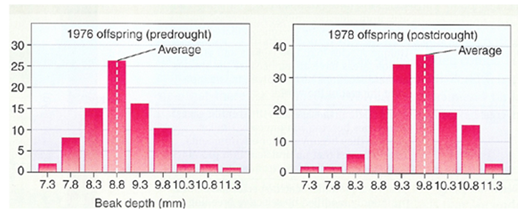All fungi:
a. are decomposers
b. perform extracellular digestion
c. are parasites
d. reproduce sexually
e. are multicellular
b
You might also like to view...
Peter and Rosemary Grant study natural selection in finches on the Galápagos Islands. They have hypothesized that dry condition produce larger seeds and may result in larger beaks in succeeding generations of finches. The figure below shows their data from 1976 and 1978. The y-axis is the number of birds measured and the x-axis is the beak depth. Do their data support their hypothesis and why?

A. Yes; because there were more birds measured in 1978 after the drought, therefore they must have been able to get food and reproduce.
B. Yes; because the average beak depth of birds in the population increased from 8.8mm in 1976 to 9.8mm in 1978.
C. No; because even though more birds were measured in 1978, the beak size of the upper range was smaller.
D. No; because in 1976, before the drought, the largest beak depth was still 11.3mm.
E. No; more data would be necessary to show a support of their hypothesis.
Sexual reproduction
A. allows more offspring to be produced per individual. B. allows a parent to pass on 100% of their genes to offspring. C. increases genetic variation. D. results in the formation of a haploid zygote. E. only occurs in vertebrates.
A(n) ________ is composed of one sugar (deoxyribose or ribose), one phosphate, and one nitrogenous base.
a. DNA b. RNA c. Nucleotide d. Amino Acid e. None of the above
Aspergillus causes both mycoses and mycotoxicosis.
Answer the following statement true (T) or false (F)